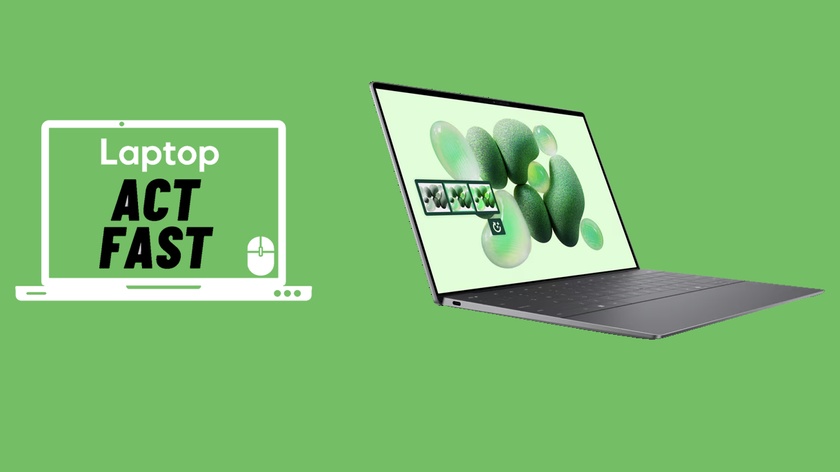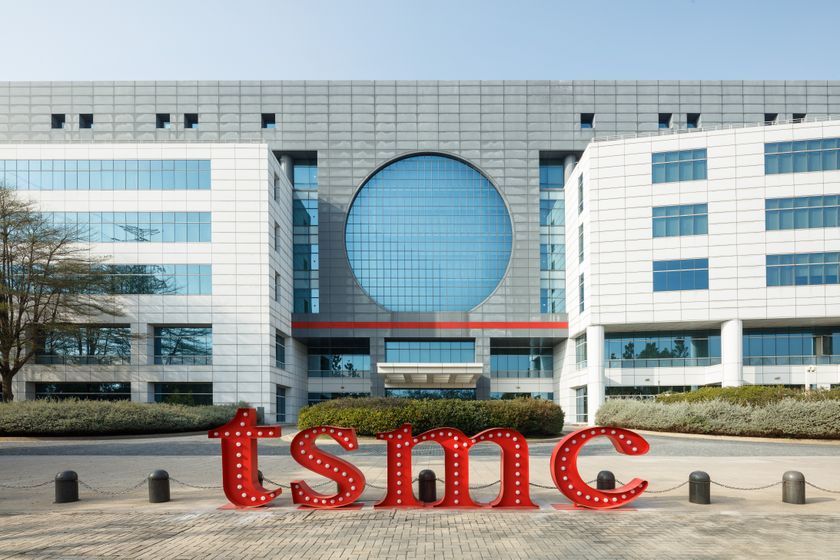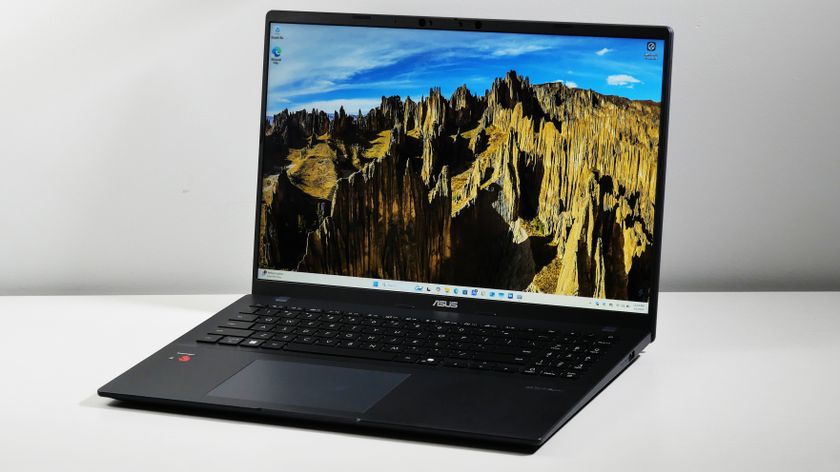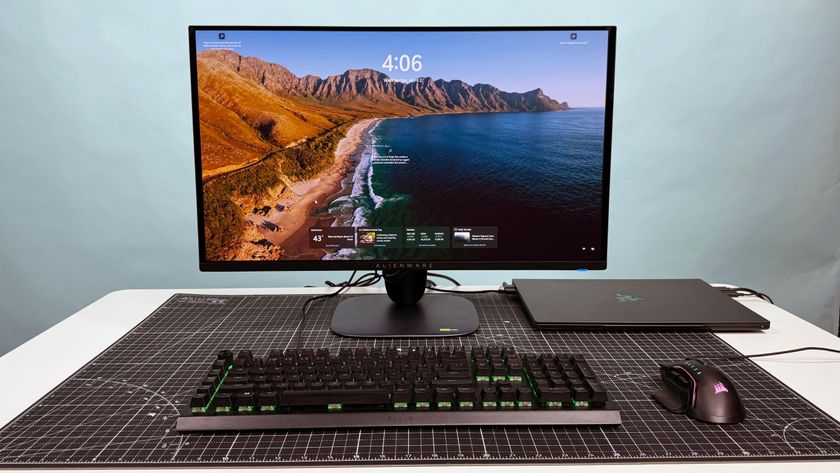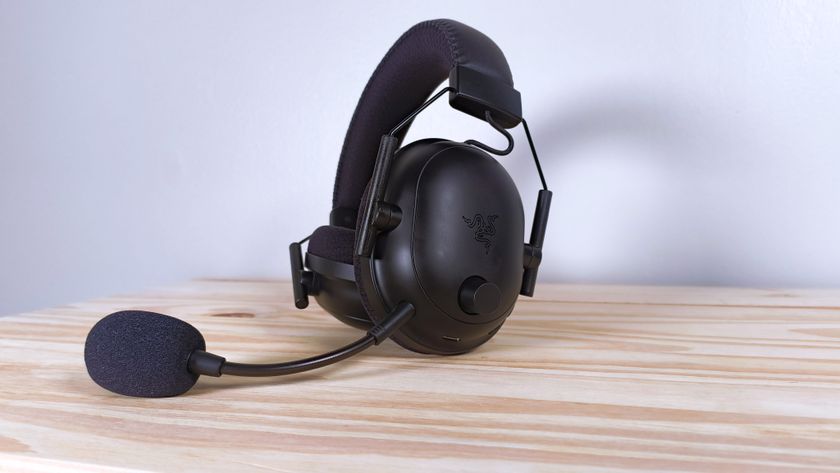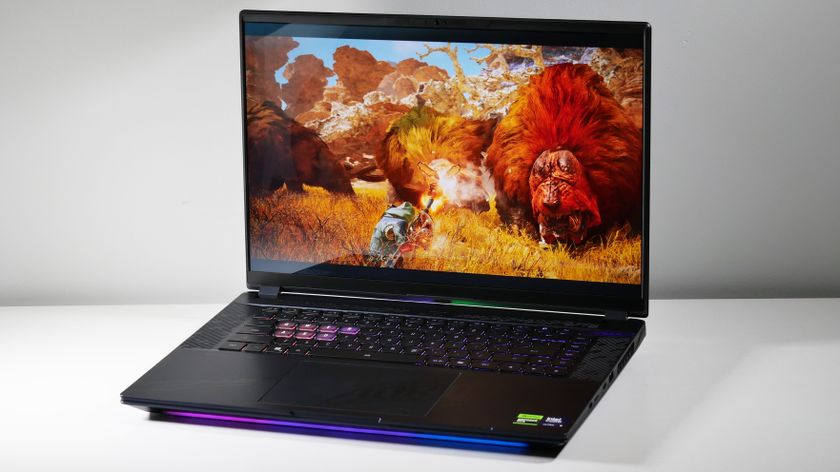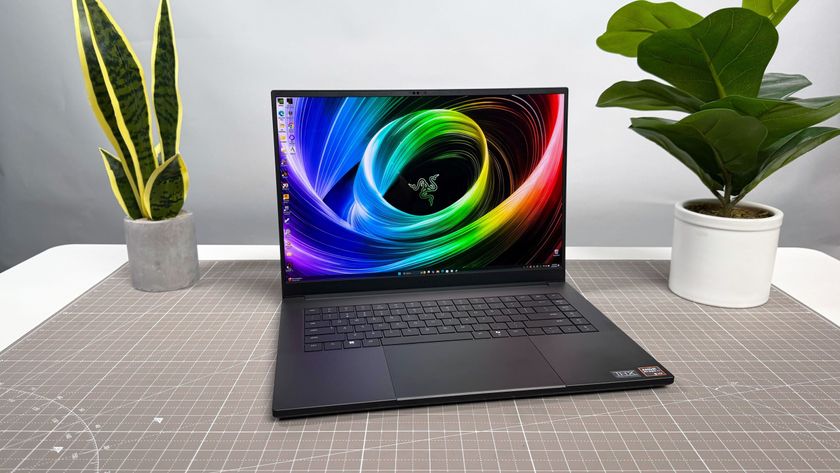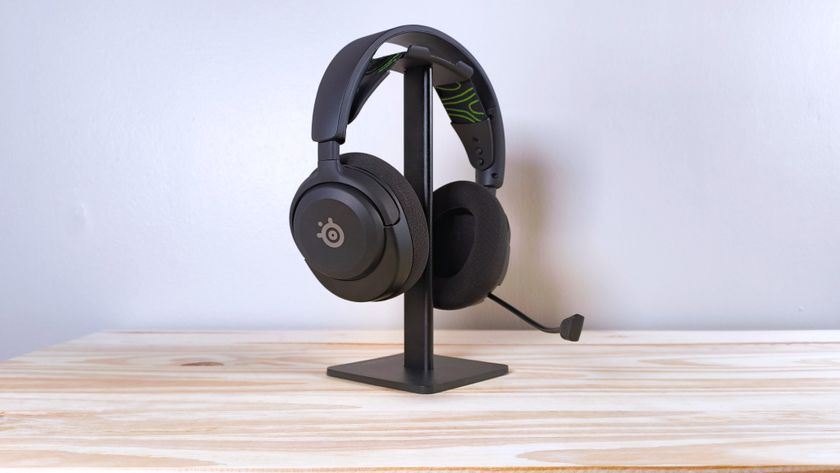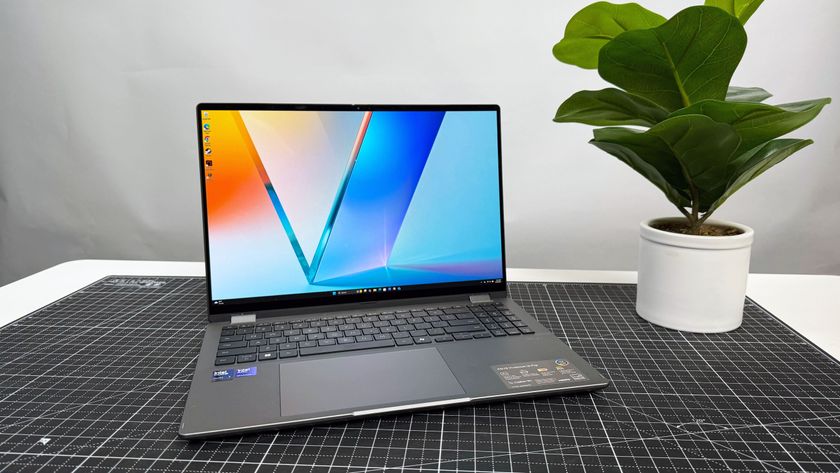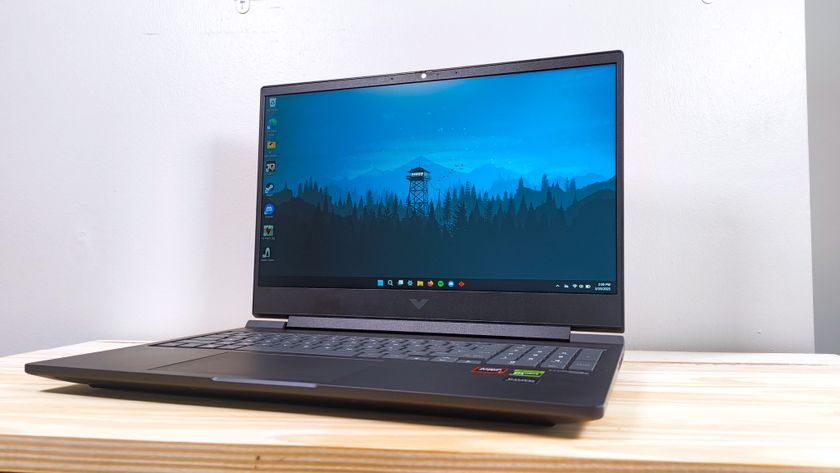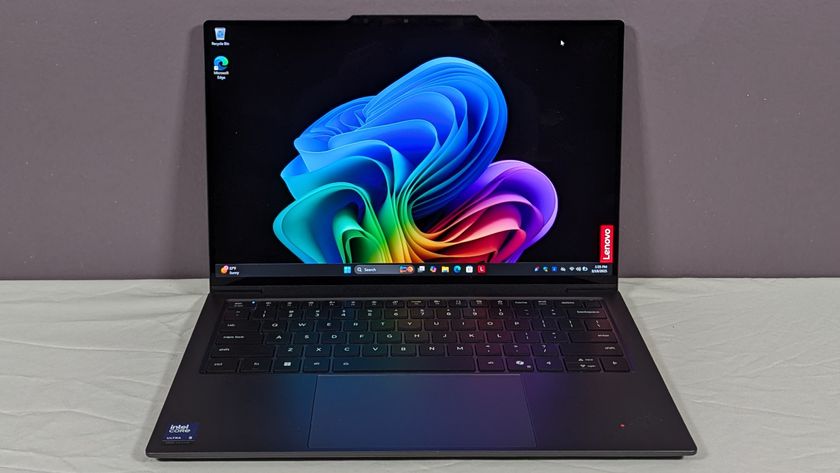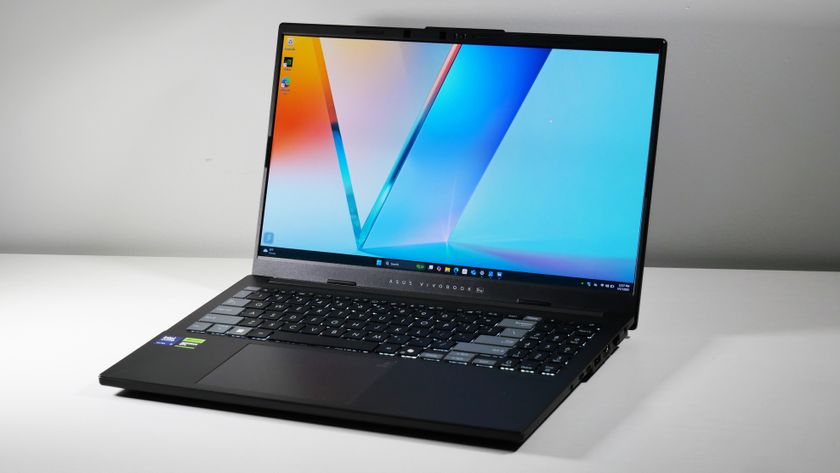Laptop Mag Verdict
Acer's budget-friendly ultraportable couples twice the performance of most netbooks with good battery life.
Pros
- +
Sleek design
- +
Comfortable keyboard
- +
Goodendurance
- +
HDMI output
Cons
- -
Mediocre graphics
- -
Bottom left side runs very warm
Why you can trust Laptop Mag
With the advent of Intel's Ultra-Low Voltage processors, notebook makers can now offer ultraportable systems that are priced similarly to netbooks, but have markedly better performance. Case in point: the Acer Aspire 1410. Thanks to its dual-core Celeron CPU, this machine has twice as much muscle as netbooks, and comes with Windows 7 Premium (not the limiting Starter Edition) for just $399. Some netbooks offer longer battery life, but the 1410's 6.5 hours of endurance make it a very good choice for consumers on the go.
Design
From the outside, the Acer Aspire 1410 looks the same as the Acer Aspire Timeline 1810T; in fact, at 11.2 x 8.0 x 1.2 inches and weighing 3.2 pounds, it's the same size and weight. Our review unit had a glossy, Ruby Red lid with Acer's metal logo impressed in the lower corner; the lid picks up fingerprints fairly easily. The same color extends to the deck, which is offset by the matte black keyboard and glossy black bezel.
Unlike the Acer Aspire One 751h netbook, the 1410's six-cell battery does not bulge out the back. Instead, it bumps out of the bottom, tilting the 1410 at a slight downward angle towards the user.
Keyboard and Touchpad
Like most other new Acer notebooks, the 1410's keyboard has flat, non-chamfered plastic keys that have a slightly textured feel. The layout is close to full size, and we appreciate that the right Shift key is large and in the proper place. We were typing at full speed in no time at all.
The touchpad sits flush with the deck, and it's only demarcated by two lines on either side. At 2.6 x 1.5 inches, it's decently sized, and a bit larger than the 751h's 2.5 x 1.6-inch touchpad; we liked that it offered little resistance as we moved our finger across it. (Toshiba's mini NB205 still offers the largest touchpad around, at 3.1 x 1.6 inches.) The two accompanying silver buttons proved nice and crisp, an improvement over the 751h's single bar.
Display and Sound
Like other notebooks with 11.6-inch displays, the 1410 has a resolution of 1366 x 768 pixels. Those extra vertical pixels mean less scrolling when viewing Web pages or documents, and that you can view high-definition content in 720p.
The screen is quite bright. When we watched an episode of The Simpsons on Hulu, we enjoyed pleasant colors and good viewing angles even from oblique side views; it was as if we were watching the show on our TV. While the glossy finish limited our viewing angles to either side of the 1410, we were still able to make out the clip when we dipped the lid forward slightly.
The 1410's speakers, located on the underside of the front lip, were fine for a small notebook, but their placement caused sound to be muffled while the notebook was in our lap; when the notebook was placed on a hard surface, such as a coffee table, music played from Slacker and was able to reflect upwards, and was more amplified.
Ports and Webcam
On the right side of the 1410 is an Ethernet port, a Kensington lock slot, two USB ports, headphone and mic, and a 5-in-1 memory card reader. On the left-hand side is a VGA port, a third USB port, and HDMI output. Underneath the front lip on the left-hand side are well-concealed switches to activate Wi-Fi and Bluetooth.
The 1.3-megapixel webcam mounted above the display worked fairly well; colors, such as a dark green shirt, were reproduced adequately in a video call over Skype. Our caller also said that the image was sufficiently lighted, and that motion blur only became an issue if we waved our hand vigorously.

Click to enlarge

Click to enlarge
Performance
Powered by a 1.2-GHz Intel Celeron SU2300 CPU and aided by 2GB of RAM, the 1410 was able to notch a score of 2,475 in PCMark Vantage. That's still about 300 points below the ultraportable average and around 500 points below the 1810T, but more than 1,000 points above the MSI Wind12 U210 (which has a 1.6-GHz AMD Athlon Neo MV-40 CPU). The Gateway LT3103u (which has a 1.2-GHz AMD Athlon 64 L110 CPU) scored over 1,300 points lower.
The 1410's Geekbench score of 1510 is nearly double that of Atom-powered netbooks running Windows 7, such as the Toshiba mini NB205-N330BL (805) and the ASUS Eee PC 1008HA Seashell (826), and is very close to that of the 1810T (1,605).
The 1410's 5,400-rpm, 250GB hard drive booted Windows Vista Home Premium in a fairly snappy 55 seconds, and was decently speedy during our LAPTOP Transfer Test. It duplicated 4.97GB of multimedia files at a rate of 19.6 MBps, 1.0 MBps slower than average.
We then tested the 1410 by converting a 114MB MPEG-4 file to AVI using HandBrake. It took the notebook 12 minutes and 47 seconds; that's about 2 minutes faster than the ultraportable average, and nearly 9 minutes faster than the MSI Wind12 U210. On the other hand, the HP Mini 311 converted the file in less than half that time using vReveal, a program that's optimized to take advantage of that laptop's Nvidia Ion graphics.
In everyday computing--surfing the Web, video chatting, playing Spore, writing a document in Microsoft Word--the 1410 performed well, never choking on any of the aforementioned tasks.
Graphics and Video Performance
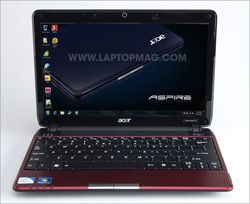
Click to enlargePredictably, graphics scores were weak on the 1410; the Intel GMA 4500MHD GPU mustered only 595 in 3DMark06. While that's well above the netbook average (130), it's about 300 points below the ultraportable average, and about half that of the HP Mini 311 (which has Nvidia Ion graphics).
However, we were able to play World of Warcraft comfortably on the 1410. With the resolution set to 800 x 600, we saw an average frame rate of 24 frames per second, which dipped to 17 fps when we upped the game to the native resolution. Even though that's somewhat low, on-screen action was still smooth as we flew from Orgrimmar to Thunder Bluff.
We tested this machine's multimedia mettle further by outputting high-def MPEG-4 videos to a 32-inch 1080p Samsung LCD television via HDMI. With its resolution set to 1920 x 1080, a 1080p video (the trailer for Cloudy with a Chance of Meatballs) played smoothly at full screen. When streaming an episode of The Simpsons at full screen, the video was slightly choppy--just enough to be distracting.
Battery Life and Wi-Fi
The one area where netbooks have the advantage over ULV processors is in endurance. The 1410's battery lasted 6 hours and 33 minutes on the LAPTOP Battery Test (Web surfing via Wi-Fi). While that's about 1 hour and 15 minutes longer than the ultraportable average, it's nearly 2.5 hours short of the Toshiba mini NB205-N330BL (8:51). The Acer 1810T, which costs $200 more, offers stronger performance than the 1410, as well as a longer runtime of 8:45.
The 802.11a/b/g/draft-n Wi-Fi throughput of 19.9 Mbps at 15 feet from our access point was just about in line with the category average (20.5); at 50 feet, it performed slightly better, achieving a throughput of 18.7 Mbps (where the average is just 17.3 Mbps).
Heat
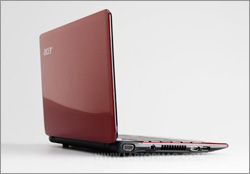
Click to enlargeWhile running our transcoding test, we measured the temperature of the 1410: the touchpad and the area between the G and H keys stayed below 90 degrees Fahrenheit, but the left side of the undercarriage got as hot as 100 degrees.
Greenness
Despite its additional muscle compared to a traditional netbook, the 1410 sips electricity. It took 3 hours and 43 minutes to fully recharge, and used a total of 5864.9 watts during that time. For the Laptop Battery Efficiency Rating (total watts divided by runtime), the 1410 scored 14.9. That's well below the ultraportable average (19.8), and even comfortably lower than the netbook average (16.6).
Configurations
In addition to Ruby Red, Acer offers the 1410 in either Sapphire Blue or Diamond Black. Users canlook for an olderversion with a single-core 1.4-GHz Intel Core 2 Solo SU3500 processor, a larger 250GB hard drive, and Windows Vista Home Premium.
Software and Warranty
Acer includes a spate of its own apps with the 1410 (including GameZone and Crystal Eye webcam software), as well as CyberLink PowerDVD, Google Desktop and Toolbar, a 30-day trial of McAfee InternetSecurity Suite, a 60-day trial of Microsoft Office Home & Student 2007, and Microsoft Works 9.0.
Acer covers the 1410 with a one-year warranty, which includes 24/7 toll-free phone support. Check out Acer's performance in our Tech Support Showdown to see how the company stacks up against the competition.
Verdict
If you like the portability of netbooks, but you want more power and a bigger screen in the same price range, the Acer Aspire 1410 is a very good choice. While identical in appearance, the Aspire Timeline 1810T lasts a couple of hours longer on a charge and offers more memory and hard drive space. However, that system costs $200 more. At $399--the same price as most premium 10-inch netbooks--the 1410's dual-core processor, portability, comfortable keyboard, and over 6 hours of battery life make it a compelling choice.
Acer Aspire 1410 Specs
| Brand | Acer |
| CPU | 1.2-GHz Intel Celeron SU2300 |
| Card Slots | 5-1 card reader |
| Company Website | http://us.acer.com |
| Display Size | 11.6 |
| Graphics Card | Intel GMA 4500MHD |
| Hard Drive Size | 160GB |
| Hard Drive Speed | 5,400rpm |
| Native Resolution | 1366x768 |
| Operating System | MS Windows 7 Home Premium |
| Ports (excluding USB) | Kensington Lock, Headphone, HDMI, Ethernet, VGA, Microphone |
| RAM | 2GB |
| RAM Upgradable to | 4GB |
| Size | 11.2 x 8.0 x 1.2 inches |
| USB Ports | 3 |
| Video Memory | 132MB |
| Warranty/Support | One-year limited/24/7 toll-free |
| Weight | 3.2 pounds |
| Wi-Fi | 802.11a/b/g/draft-n |
